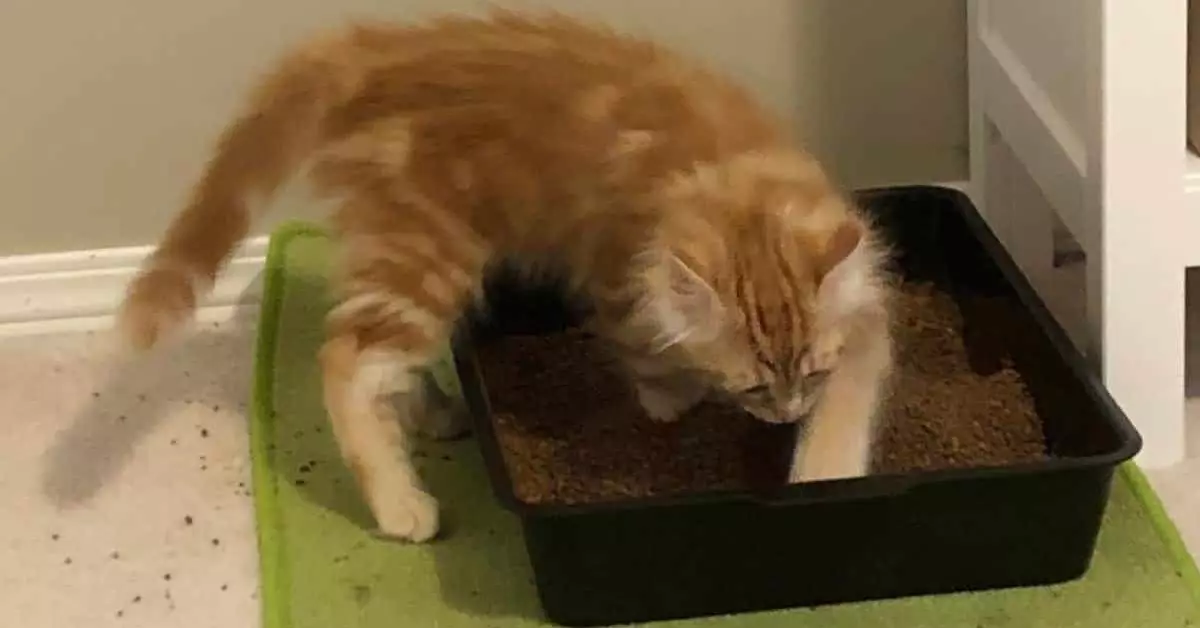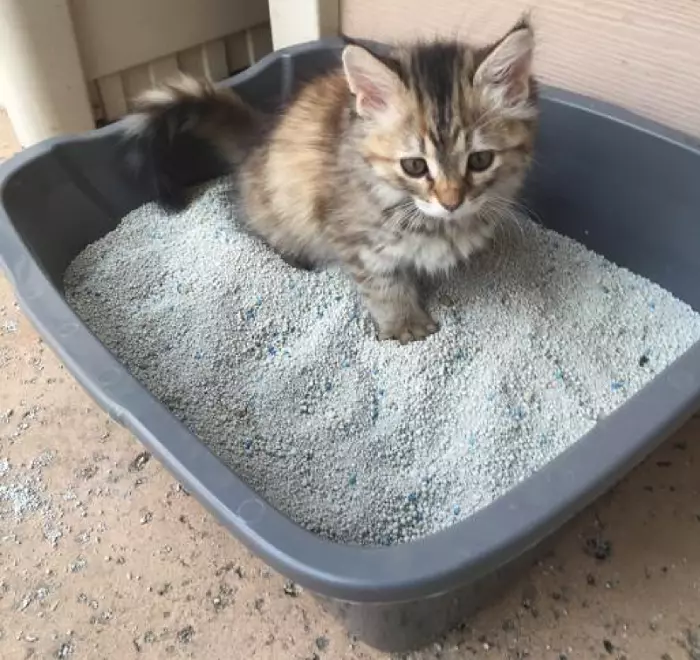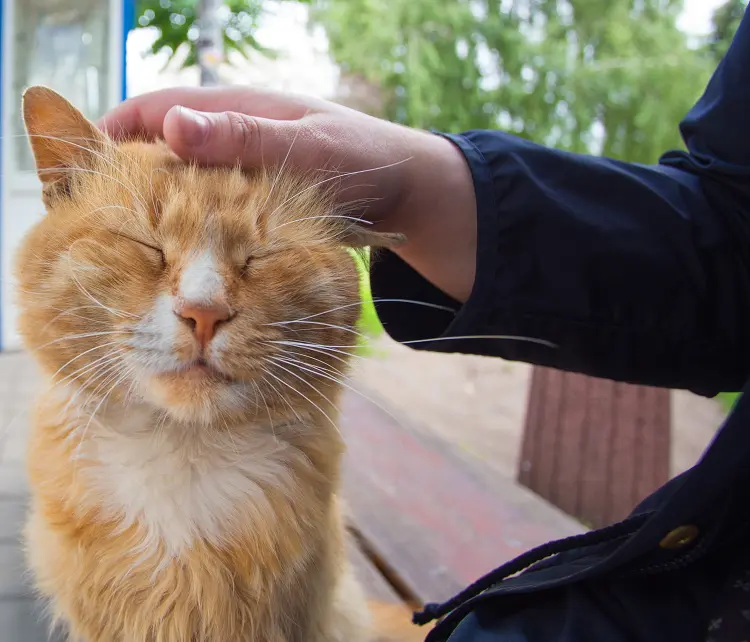How To Litter Train A Stray Kitten At Home
Unlike domesticated cats, knowing how to litter train a stray kitten might take more patience. These kitties are used to eliminating wherever they feel safe and comfortable in the wild. With that, you need to use dirt before introducing unscented litter. This process will mimic the soil’s natural feel so your stray cat will understand the process faster and easier.
How To Litter Train A Stray Kitten? 5 Easy steps
Litter training a stray kitten requires patience due to their wild instincts. It may continue to seek outdoor soil, which is why using commercially available litter right away isn’t ideal.

Stray kittens may try to escape whenever they see any opportunity so you should know how to leash train a kitten.
For guaranteed success, the following are the steps I recommend:

Materials you need
- Old shoebox (big enough for the kitten)
- Dirt from the yard (make sure it’s not chemically treated)
- Litter scooper
- An unscented litter with small grain
Procedure
- Step 1- Add the dirt into the shoebox
This will be the makeshift litter box of your kitten during training. It mimics the soil outdoors, which will encourage your stray kitten to defecate on the dirt instead of having accidents around the house. If you have a small stray kitten, say 4 to 6 weeks, use the box lid so it will be easier to enter.
- Step 2- Place the box in the bathroom
I personally prefer the bathroom because it will be easier to clean any accidents, not to mention that the odor will be kept within a small area. Anyway, you can always use another room as you wish. Just make sure that it’s small so that the stray kitten won’t be overwhelmed by the space.
Aside from that, you should also place your stray kitten’s food and water bowl inside the bathroom. Put the makeshift litterbox in a corner, then the food on another. Putting food near the poo box may seem unhygienic and improper but the purpose of keeping these two items nearby is because kittens defecate minutes after eating. Also, most kittens, stray or not, will look for a corner where they can eliminate safely.
- Step 3- Monitor the kitten
After setting up everything, the next step is to monitor the kitten. You can’t lock the stray kitten in a room and expect that it will litter train itself.
After mealtime, keep your stray kitten close to the litter box. Kittens have a hard-wired instinct not to soil where they eat or sleep.
It will surely seek a corner, so make that you direct it into the litter box. If there are other corners, block them with furniture.
Once the stray kitten shows signs of defecating like meowing, floor scratching, and straining, put it on the litter box right away.
If the kitty enters the litter box on its own, pet it gently as a form of reward. Since the stray kitten is about to eliminate, it’s not wise to give it a treat.
- Step 4- Repeat the process
On each meal of your stray kitten, keep monitoring it and repeating the same process. The goal here is for the kitten to pick up the process so it will recognize the litter box.
However, expect that the stray kitten will have accidents. After all, it’s still a kitten, and it doesn’t know that you’re actually training. Never scold the kitten because it will make the kitty afraid of eliminating, which will lead to more accidents.
- Step 5- Start introducing the unscented litter
Once your stray kitten is used to the temporary litter box, it’s time to introduce the unscented litter. Slowly add the litter into the soil on the same box. Do so gradually and in small amounts so your stray kitten will not be overwhelmed by the new material. Replacing the dirt with unscented litter may drive the kitten away, which will waste all your previous efforts.
Perform the transition for a week until the dirt is completely replaced. After a few weeks, you can introduce an actual litter box to the stray kitten.
Litter training kitten problems
Remember that litter training doesn’t happen overnight. You may encounter litter box problems like the following:
- Accidents. It’s normal for kittens to have accidents during litter training. Even stray kittens that are used to eliminating outdoors will experience this. Be patient, and your kitten will surely overcome this.
- Refusing the litter box. This is a notorious problem among stray kittens. It’s possible that the litter box is dirty or has a strong smell that the kitty finds repulsive. Remember that you should remove used litter right away since kittens have a very sensitive nose.
- Negative association. One thing you should be careful with is how you will introduce the litter box to your kitten. You must never punish your kitten if it refuses to go to the litter box. Always identify what’s causing this and try to fix it.
- Multiple cats. Yes, even your older cats can cause litter training problems for a stray kitten. Make sure that the other cats are kept away while you do potty training. Also, introduce the stray kitten to other pets slowly to prevent catfights and negative association with the litter box.
When do I have to litter train a kitten?
Kittens, stray or not, can be litter trained once they reach four weeks. At this time, your kitten can walk without too much wobble, and its mother is already starting to wean the kittens off. However, if you found the stray kitten without the mama cat, you may have to wean the kitty manually.
Litter training can take anywhere from two weeks to a month, depending on how stubborn the kitten is. Remember that each cat is different, so you should stay patient if your stray kitten is taking more time to understand potty training.
Do mother cats litter train their kittens?
Yes, mother cats litter train their kittens. Domesticated mama cats will usually bring the kittens to the litter box to eliminate. For stray kittens, their feral mother cat will teach them how to poo outdoors. Every mother cat has an instinct to teach its litter survival skills once it’s old enough to walk and stand on its own.
Most kittens raised by their mother cat outdoors are usually litter trained. You have to introduce the concept of the litter box so the stray kitten won’t have to seek the outdoor ground to eliminate.
How to train a stray cat to be a house cat?

Stray kittens are often aloof and have intense hunting instincts. It can be challenging to raise them like house cats, but there’s always a workaround here.
It would help if you transitioned the stray kitten from outdoors to indoors slowly. Never bring the stray cat indoors; let it enter your home on its own volition. Please expect that the stray cat will scratch surfaces and vocalize the first time it enters your home.
Never lock a stray kitten in a room against its own will. It will end up damaging your belongings, and once it escapes, it will never come back. Let it exit your home when it wants to, so the stray cat will know that your space is safe.
During winter, you can lure a stray cat indoors by offering a warm bed. This works most of the time since a stray kitten will be freezing outdoors. Give some warm food, too, to encourage the stray cat to stay.
Most of all, make life fun inside your home. Give the stray cat reasons to enter and stay in your home. Take note that this process will take longer, with some stray cats resisting for over a year before finally giving in.
Just like indoor cats, stray cats also deserve care, love, and affection. But stray cats should be introduced to the already existing pets slowly and after proper quarantine. Stray cats do not have vaccination shots mostly, and they can transmit deadly diseases to your pets.
If you encounter too many stray cats trying to get into your home or facing problems with a stray cat, you should know what to do with a stray cat that won’t leave.
Conclusion
Knowing how to litter train a stray kitten takes patience. It would help if you always were gentle so the kitty wouldn’t be stressed. Expect accidents but never punish the kitty for doing so. Keep going until your little feline learns how to use a litter box. As each kitten is different, you shouldn’t give a deadline to litter training.
